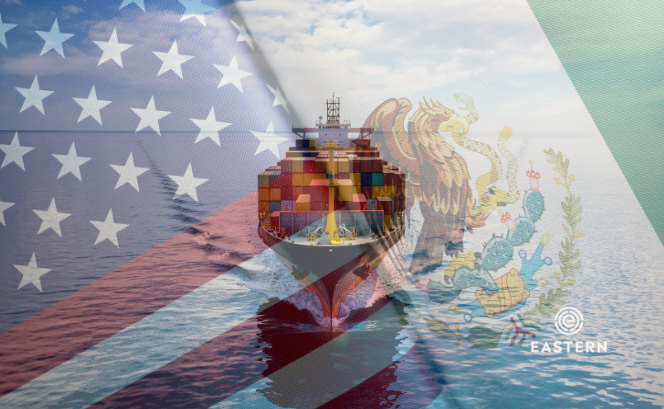Noticias de la Industria
Mexico's Rise: Surpassing China as the Leading US Trade Partner
septiembre 12, 2023

Mexico has found itself in the spotlight as it becomes the United States' largest trading partner, surpassing China. This shift in trade dynamics comes as tensions between the US and China continue to reshape global commerce. Mexico's unique position, with its proximity to the US and robust economic performance, has captured the attention of investors and businesses worldwide. Still, Mexico faces challenges and must navigate potential pitfalls to make the most of this opportunity.
The New Cold War as a Business Opportunity
The escalating US-China tensions have created a new business landscape. With the US aiming to reduce its supply-chain reliance on geopolitical rivals and bring imports closer to home, Mexico is an appealing choice for these strategic shifts. As a result, Mexico has risen to the forefront as the primary supplier of goods to its giant neighbor, the United States.
Mexico's Economic Strength
Mexico's economic indicators are highly promising. It boasts the world's strongest currency this year, one of the best-performing stock markets, and a surge of over 40% in foreign direct investment in 2023. This surge in interest from investors is reminiscent of the period following the North American Free Trade Agreement (NAFTA) in the 1990s.
Historical Challenges
Despite these positive developments, Mexico has a history of missing opportunities for robust economic growth. Over the past three decades, its average annual growth rate has been around 2%, falling below the standard for developing economies. This growth has not been sufficient to lift millions of Mexicans out of poverty. Some countries, such as Turkey, Malaysia, and Poland, have managed to achieve substantial economic growth despite starting from a lower economic base than Mexico.
Obstacles and Competition
Mexico faces a series of obstacles that could potentially hinder its current economic boom. President Andrés Manuel López Obrador's government has had conflicts with business interests as it seeks to increase the state's role in the economy. Mexican businesses have been cautious about borrowing and investing, which may limit the transformation of short-term growth into sustained development. Additionally, Mexico faces competition from countries like Vietnam in the race to replace China as a supplier to the US.
Infrastructure Challenges
Even with current investments, Mexico's infrastructure is under pressure due to issues such as power blackouts, limited industrial space, and water scarcity, posing challenges to accommodate the surge in industrial activity.
Regional Boomtowns
Certain regions in Mexico, like Monterrey, are experiencing an industrial boom. The demand for components for companies like Tesla has driven the rapid expansion of industrial space and the establishment of numerous factories.
Foreign Investment and Industrial Parks
Foreign investment is pouring into Mexico, with more than 30 companies moving to Nuevo León alone since Tesla announced plans to build factories in Texas and Nuevo León. Major carmakers like General Motors, Kia Motors, and BMW are also investing in electric vehicle production in Mexico. Industrial parks are filling up fast, with a significant portion of renters being foreign companies.
A demonstrator carries a sign protesting a lack of electricity in homes in Monterrey; Last year, residents lined up to fill containers with clean water during a shortage. Photographers: Mauricio Palos/Bloomberg; Marian Carrasquero/Bloomberg
Local Landowners and Natural Resources
Local landowners are benefiting from this industrial surge. However, natural resource limitations, such as droughts leading to water shortages, pose challenges to sustainable growth.
Diversifying Investments and Domestic Growth
To ensure that the benefits of nearshoring are spread widely and that the economy achieves sustained growth, Mexico needs more diversified investments and a broader geographic focus. Domestic investment and value addition are crucial to this strategy.
President's Vision for Balanced Growth
President López Obrador aims to promote more balanced growth across Mexico, reducing regional disparities. While there have been disputes with business interests, he welcomes foreign investments that create jobs, provided they are distributed more evenly across the country.
Mexico's pivotal role in the evolving global trade landscape is undeniable, driven by its geographical proximity to the US and its free trade agreement. This positioning alone is expected to attract more investment, even without major policy changes. As Mexico navigates its way through challenges and opportunities, experts believe that it could add as much as 0.7 percentage points to its GDP annually, potentially propelling its economic growth beyond the current 2% rate. The question remains: can Mexico seize this moment and leverage its newfound prominence in global trade?
Source: Bloomberg